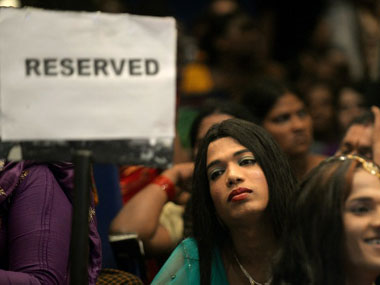The rights of the transgender community were defined in 2014 by the Supreme Court, and yet there is a sense of helplessness in the organs of the government about how to move further in terms of substantially creating justice pathways for them. The most recent progress is that the Parliamentary Standing Committee on Social Justice has brought out a report in July, 2017. A part of the report assures to the community that they are safe and that a historic paradigm shift is underway.
“The Committee would like to assure and remind all members of the transgender community that a historic shift is underway… you are not alone in your struggle for the end of violence and discrimination. It is a shared struggle. Transgender is not an anomaly. It is a part of the spectrum of people’s realities,” the report said.
Despite this assurance, not a lot has moved since the NALSA versus Union of India verdict. The Supreme Court recognised transgender persons as the ’third gender’ – a feat unthought of, despites decades of struggle by trans-activists – and stated that all basic human rights and constitutional freedoms of the transgender community are absolute, inalienable and indivisible.
Currently, there are two Bills around the rights of the transgender community: the Rights of Transgender Persons Bill, 2014, a private-member Bill, incorporates the spirit of the NALSA judgment, while the Central government’s Transgender Persons (Protection of Rights) Bill, 2016 is a diluted version, full of loopholes and does more harm than good for the community.
The Parliamentary Committee’s report has, in fact, reviewed the 2016 Bill and has brought up several areas that need to be revised so that it can move towards passage. One such area is perhaps the most important, the right to self-identify.
The report suggests that a part of the definitions clause is “primitive and unscientific” and that it heavily deviates from the NALSA judgment, which is draconian because the judgment has paved the way for a rights-based legislation for transpeople. Clause 2(i) defines transgender as “neither wholly female nor wholly male; a combination of female or male; neither female nor male and whose sense of gender does not match with the gender assigned to the person at the time of birth.”
The Bill, the report found, heavily focussed on two-fold criteria to identify members of the community by administering a “biological test” and thereafter, a “psychological test”, completely at odds with the NALSA directive. The Committee has also recommended a more nuanced definition of transgender – “All persons whose own sense of gender does not match with the gender assigned to them at birth. They will include trans-men and trans-women (whether or not they have undergone sex reassignment surgery or hormonal treatment or laser therapy, etc.) genderqueers and a number of socio-cultural identities, such as Kinnars, hijras, aravanis, jogtas, etc. The term ’transgender’ shall be construed accordingly.”
Keeping this in mind, the Centre may “tweak” the definition of transgender persons to shift the focus from a biological test to the individual’s absolute freedom to choose their gender identity. Biological features would not be a mandate for the identification of trans-persons.
Such an affirmation was already made by the Supreme Court in NALSA. Both Justices KS Radhakrishnan and AK Sikri broke down the hegemonic binary constructs of ‘man’ and ‘woman’’, that is deep-rooted in Indian laws, and stated that there is a spectrum of different gender identities.
The apex court progressively stated that “the gender to which a person belongs is to be determined by the person concerned”, therefore, recognising an inherent right to personal identity and autonomy under Article 21 (the right to life) of the Indian Constitution. The enjoyment of “full moral citizenship” under the NALSA verdict would first and foremost require this specific right to self-identity.
The 2016 Bill, therefore, provided for the right to perceived gender identity, which is not absolute and required every transgender person to apply to a District Screening Committee – consisting of the chief medical officer , the district social welfare officer, a psychologist or psychiatrist, a representative of the transgender community and an officer of the relevant government – that would conduct an inquiry and attempt to certify transgender identities.
The blatant shift of the 2016 Bill from these principles was a gross violation of constitutional rights and basic human rights and became state-sanctioned discrimination against a community that deserves affirmative action and support. In the garb of protecting this community, this certification would, in all likelihood, be misused against them, and would result in a complete ghettoisation of the transgender community.
It is, therefore, very commendable that the Centre has decided to take action about the definition of trans-people. Additionally, the Parliamentary Committee has brought up a significant issue – it has recommended that all legislations be aligned with the rights of the transgender community after the definitions clause has been tackled.
This would mean that the community will find justice pathways in existing criminal and property laws and be permitted to register their marriages, adoptions, and divorces. Most significantly, the report traces out protection from sexual violence as an important part of the overall pathway for trans-people and has suggested to the Centre to provide clarity on this as well.
Lastly, it looks at discrimination and stigma as issues that often stop the community from progressing on many fronts. The report “recommend[s> that the Bill should also specifically recognise, and provide appropriate penalties for, violence that transgender persons face from officials in educational institutions, healthcare institutions, police stations, jails, shelter and remand homes and other places of custody.”
In many ways, resolving the definition question will support the recognition of civil and political rights of the community.


)




)
)
)
)
)
)